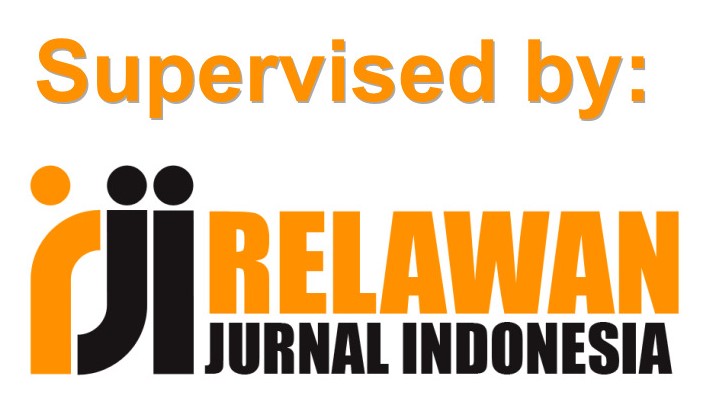Analisis Manajemen Persediaan Barang Dagang Pada Koperasi Wanita Petra (Studi Kasus Coop Mart Pertamina RU-III Plaju) Periode 2014-2016
DOI:
https://doi.org/10.31851/jmanivestasi.v3i2.7385Abstract
ABSTRACTÂThe purpose of this study was to determine the management of merchandise inventory at the Petra Women's Cooperative Case Study (Coop Mart) Pertamina RU-III Plaju. The data used in this study are primary and secondary data. Primary data is data that is directly obtained at the research unit. Secondary data is data that supports research obtained by studying problems related to the object under study. The method used is descriptive qualitative method. Petra women's cooperative (Coop Mart) Pertamina RU-III Plaju. With its main business being a cooperative, this cooperative manages the inventory of goods well, so that at any time the supplies of goods needed run out, the cooperative still keeps urgent stock of goods. The results of the analysis are used to find out that the inventory management of the first women's cooperative (Coop Mart) has not been regular in carrying out its inventory seen from inventory turnover, safety stock and reorder points experiencing ups and downs in inventory because without strict supervision of the entry and exit of goods so that it affects the inventory so that inventory management analysis is very important to prevent excess or shortage of goods.
Â
Keywords : Reorder Point, Safety Stock
Â
Â
ABSTRAK
Â
Tujuan penelitian ini adalah untuk mengetahui manajemen persediaan barang dagang pada koperasi wanita petra studi kasus (Coop Mart) Pertamina RU-III Plaju. Data yang digunakan dalam penelitian ini adalah data primer dan sekunder. Data primer adalah data yang langsung diperoleh pada unit penelitian. Data sekunder adalah data yang menunjang penelitian yang diperoleh dengan cara mempelajari masalah yang berhubungan dengan objek yang diteliti. Metode yang digunakan adalah metode kualitatif deskriptif. Koperasi wanita petra (Coop Mart) Pertamina RU-III Plaju. Dengan usaha utamanya koperasi, koperasi ini mengelola persediaan barang dengan baik, sehingga sewaktu-waktu persediaan barang yang diperlukan habis koperasi masih menyimpan stock barang yang mendesak.
Hasil analsisis tersebut digunakan untuk mengetahui bahwa Manajemen persediaan barang koperasi wanita perta (Coop Mart) belum teratur dalam melakukan persediaan barangnya dilihat dari perputaran persediaan, safety stock dan reorder point mengalami naik turunnya persediaan karena tanpa ada pengawasan yang ketat terhadap keluar masuknya barang sehingga berpengaruh pada persediaan sehingga analisis Manajemen persediaan sangat penting untuk mencegah kelebihan atau kekurangan barang.
Â
Kata Kunci : Titik Pemesanan Ulang, Stok Pengaman
References
Adi Nugroho, dkk. (2012). Hubungan Stres Terhadap Gula Darah Karyawan Pabrik Tekstil. Jurnal Kesehatan.
Agus Sartono. 2010. Manajemen Keuangan Teori dan Aplikasi. Edisi 4. Yogjakarta: BPFE
Agus, Ristono. 2009. Manajemen Persediaan. Edisi 1.Yogyakarta : Graha Ilmu
Fahmi, Irham. (2018). Pengantar Manajemen Keuangan. Bandung: CV. Alfabeta.
Heizer dan Render. 2014. Manajemen Operasi. Jakarta: Salemba Empat
I Made Sudana. 2011. Manajemen Keuangan Perusahaan Teori dan Praktik. Jakarta: Erlangga
Kasmir. 2017. Analisis Laporan Keuangan. PT RajaGrafindo Persada. Jakarta.
Noor, Juliansyah. (2013). Penelitian Ilmu Manajemen. Jakarta: Kencana.
PSAK 14 (Penyesuaian 2014): Persediaan
Sugiyono. (2017). Metode Penelitian Kuantitatif, kualitatif, dan R&D. Bandung: Alfabeta
Downloads
Published
Issue
Section
License
The copyright of the received article shall be assigned to the publisher of the journal licensed under a Creative Commons Attribution-NonCommercial 4.0 International License in line with the license, authors and any users (readers and other researchers) are allowed to share and adapt the material only for non-commercial purposes. In addition, the material must be given appropriate credit, provided with a link to the license, and indicated if changes were made. If authors remix, transform or build upon the material, authors must distribute their contributions under the same license as the original.




















